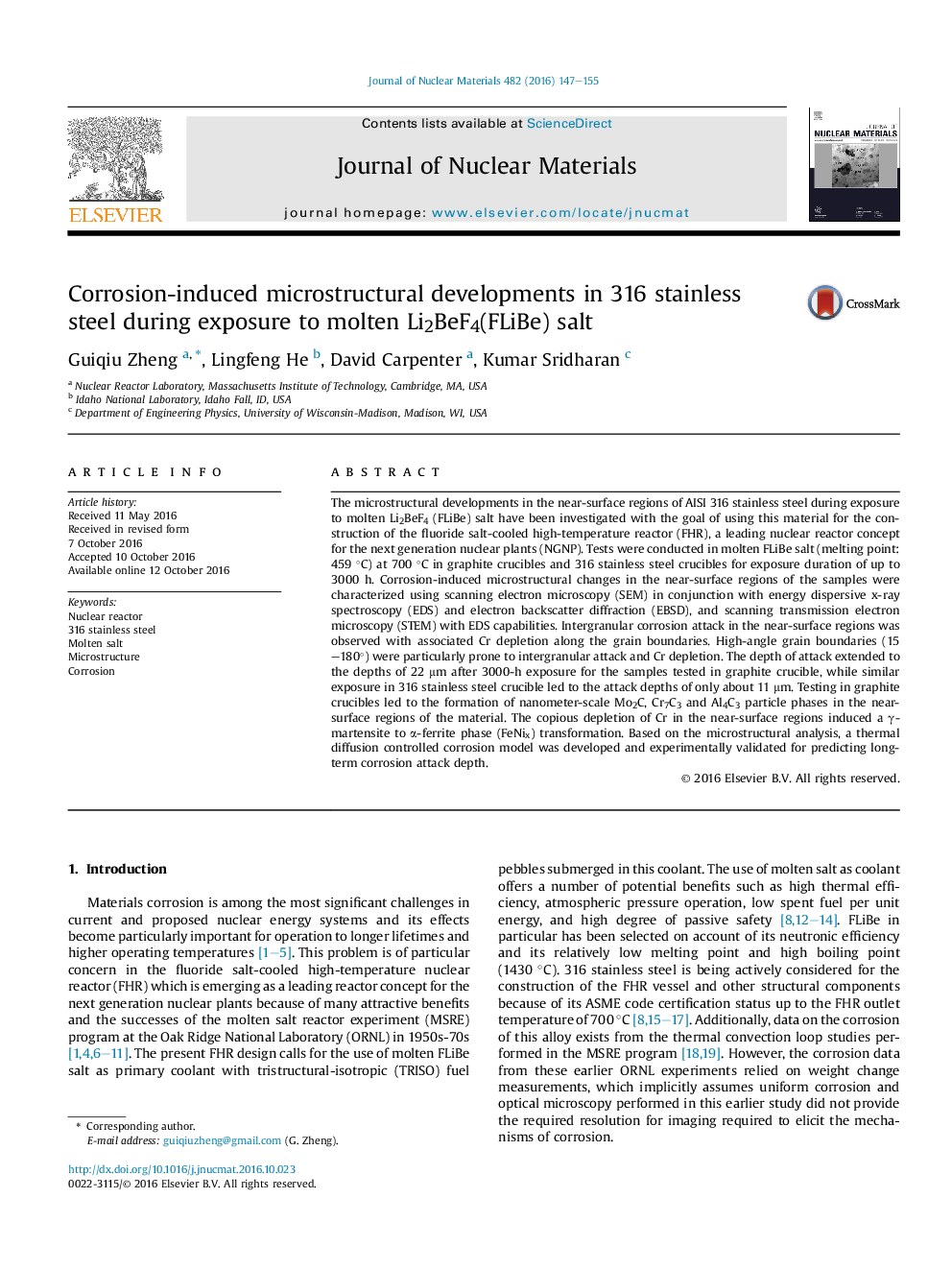| کد مقاله | کد نشریه | سال انتشار | مقاله انگلیسی | نسخه تمام متن |
|---|---|---|---|---|
| 5454371 | 1514164 | 2016 | 9 صفحه PDF | دانلود رایگان |
عنوان انگلیسی مقاله ISI
Corrosion-induced microstructural developments in 316 stainless steel during exposure to molten Li2BeF4(FLiBe) salt
دانلود مقاله + سفارش ترجمه
دانلود مقاله ISI انگلیسی
رایگان برای ایرانیان
کلمات کلیدی
موضوعات مرتبط
مهندسی و علوم پایه
مهندسی انرژی
انرژی هسته ای و مهندسی
پیش نمایش صفحه اول مقاله

چکیده انگلیسی
The microstructural developments in the near-surface regions of AISI 316 stainless steel during exposure to molten Li2BeF4 (FLiBe) salt have been investigated with the goal of using this material for the construction of the fluoride salt-cooled high-temperature reactor (FHR), a leading nuclear reactor concept for the next generation nuclear plants (NGNP). Tests were conducted in molten FLiBe salt (melting point: 459 °C) at 700 °C in graphite crucibles and 316 stainless steel crucibles for exposure duration of up to 3000 h. Corrosion-induced microstructural changes in the near-surface regions of the samples were characterized using scanning electron microscopy (SEM) in conjunction with energy dispersive x-ray spectroscopy (EDS) and electron backscatter diffraction (EBSD), and scanning transmission electron microscopy (STEM) with EDS capabilities. Intergranular corrosion attack in the near-surface regions was observed with associated Cr depletion along the grain boundaries. High-angle grain boundaries (15-180°) were particularly prone to intergranular attack and Cr depletion. The depth of attack extended to the depths of 22 μm after 3000-h exposure for the samples tested in graphite crucible, while similar exposure in 316 stainless steel crucible led to the attack depths of only about 11 μm. Testing in graphite crucibles led to the formation of nanometer-scale Mo2C, Cr7C3 and Al4C3 particle phases in the near-surface regions of the material. The copious depletion of Cr in the near-surface regions induced a γ-martensite to α-ferrite phase (FeNix) transformation. Based on the microstructural analysis, a thermal diffusion controlled corrosion model was developed and experimentally validated for predicting long-term corrosion attack depth.
ناشر
Database: Elsevier - ScienceDirect (ساینس دایرکت)
Journal: Journal of Nuclear Materials - Volume 482, 15 December 2016, Pages 147-155
Journal: Journal of Nuclear Materials - Volume 482, 15 December 2016, Pages 147-155
نویسندگان
Guiqiu Zheng, Lingfeng He, David Carpenter, Kumar Sridharan,